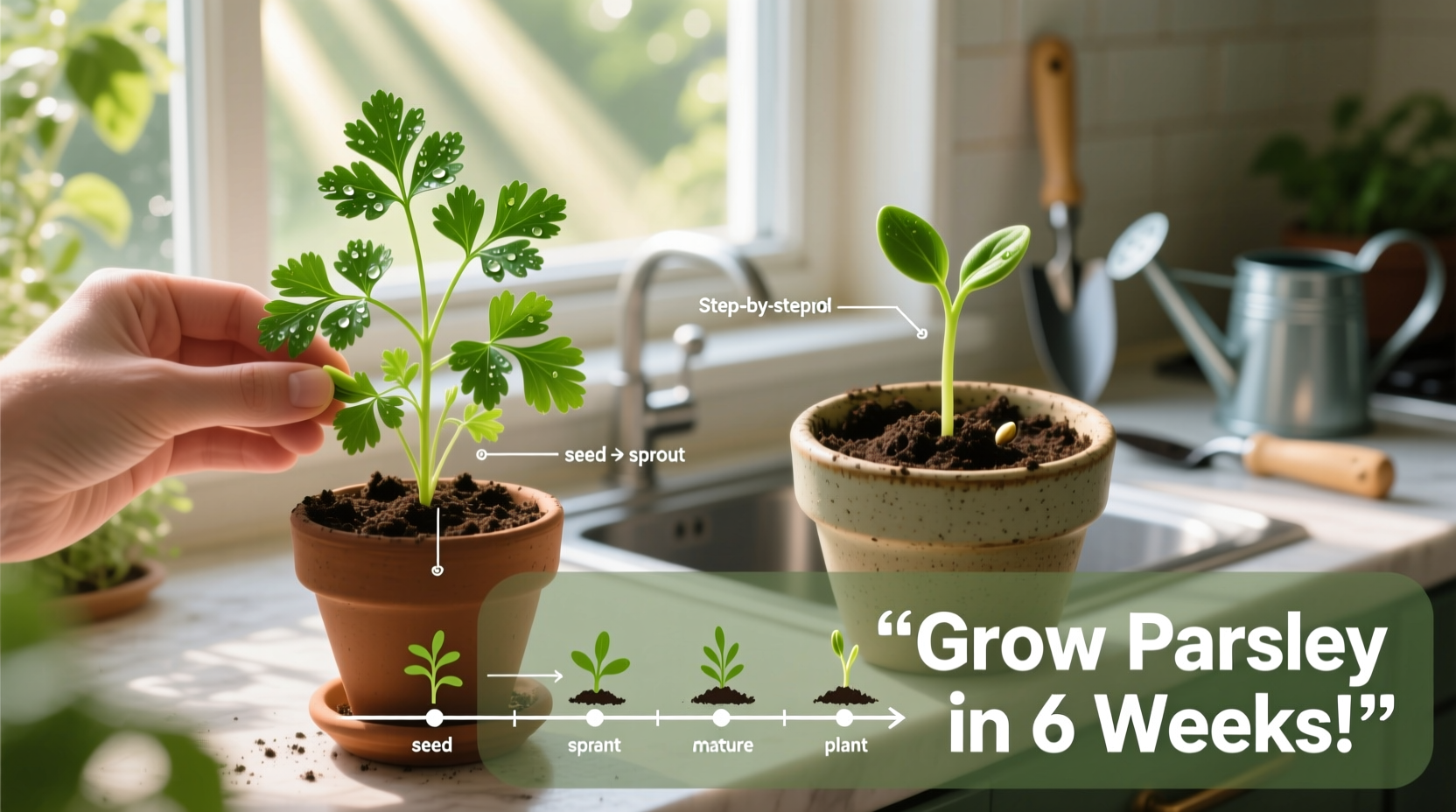Grow Perfect Parsley in 5 Simple Stages
Whether you're a first-time gardener or seasoned green thumb, growing parsley successfully requires understanding its specific needs. This comprehensive guide walks through each phase of parsley cultivation with professional techniques backed by agricultural research.
Why Parsley Growth Takes Patience (But Pays Off)
Parsley's notoriously slow germination—often taking 2-4 weeks—discourages many beginners. However, University of California Agriculture and Natural Resources confirms that proper seed preparation significantly improves success rates. Soaking seeds for 24 hours before planting can reduce germination time by up to 50%, giving your crop a crucial head start.
| Growth Stage | Timeline | Critical Success Factors |
|---|---|---|
| Germination | 14-28 days | Consistent moisture, 70°F soil temperature |
| Seedling Establishment | Weeks 3-6 | Gradual sun exposure, thinning to 6" spacing |
| Vegetative Growth | Weeks 6-10 | Regular harvesting, nitrogen-rich fertilizer |
| Harvest Ready | Week 10+ | Morning picking, never remove >1/3 of plant |
Choosing Your Parsley Variety: Curly vs. Flat-Leaf Compared
While both types grow similarly, their culinary applications differ significantly. The USDA National Institute of Food and Agriculture notes that flat-leaf (Italian) parsley contains higher concentrations of apiol, the compound responsible for its more robust flavor profile preferred by chefs.
Soil Preparation: The Foundation of Healthy Parsley
Parsley thrives in loamy soil with pH between 6.0-7.0. Cornell University's Gardeners' Resource emphasizes that proper drainage prevents root rot—a leading cause of parsley failure. Before planting:
- Mix 3 inches of compost into top 6 inches of soil
- Add 1-2 cups perlite per square foot for improved drainage
- Test soil pH and amend with lime if below 6.0
Planting Techniques That Guarantee Germination
Professional growers use these evidence-based methods:
- Soak seeds in warm water for 24 hours before planting
- Plant 1/4 inch deep—deeper planting inhibits sprouting
- Cover with vermiculite to maintain moisture
- Keep soil consistently moist (not soggy) during germination

Watering Wisdom: Avoiding Common Mistakes
Overwatering causes yellowing leaves—the most frequent parsley problem reported to the Royal Horticultural Society. Implement these watering practices:
- Water deeply 1-2 times weekly rather than daily sprinkling
- Check soil moisture by inserting finger 1 inch deep
- Use mulch to maintain consistent moisture levels
- Avoid wetting foliage to prevent fungal diseases
Harvesting for Maximum Flavor and Regrowth
Timing your harvest correctly doubles your yield. Research from the University of Maryland Extension shows that cutting stems at the base when they reach 6-8 inches tall stimulates new growth from the crown. Always harvest in the morning when essential oils are most concentrated.
Troubleshooting Guide: Solving 3 Common Problems
Problem: Yellowing leaves
Solution: Test for nitrogen deficiency—apply fish emulsion fertilizer every 3 weeks
Problem: Slow growth after transplanting
Solution: Provide temporary shade for 3-5 days to reduce transplant shock
Problem: Aphid infestation
Solution: Spray with 1:10 dish soap to water solution, rinse after 15 minutes
When NOT to Plant Parsley: Critical Timing Boundaries
While parsley tolerates light frost, the USDA Plant Hardiness Zone Map indicates it won't survive prolonged temperatures below 20°F (-7°C). Avoid planting during summer heat waves when temperatures exceed 85°F (29°C)—this triggers bolting. In zones 7+, plant in early spring or late summer for fall harvest.
Frequently Asked Questions
How long does it take to grow parsley from seed?
Parsley typically takes 14-28 days to germinate from seed, with harvest-ready plants in 70-90 days. Soaking seeds for 24 hours before planting can reduce germination time by up to 50%. Maintain consistent soil moisture during this critical period for best results.
Can you grow parsley indoors year-round?
Yes, parsley grows well indoors with 6+ hours of direct sunlight or 14-16 hours under LED grow lights. Use a 6-8 inch pot with drainage holes and keep soil consistently moist. Indoor plants benefit from monthly fish emulsion fertilizer applications to maintain vigorous growth.
Why is my parsley plant dying after transplanting?
Transplant shock commonly causes parsley to wilt. To prevent this, harden off seedlings by gradually exposing them to outdoor conditions over 7 days. When transplanting, water thoroughly and provide temporary shade for 3-5 days. Never transplant during extreme heat—early morning on cloudy days works best.
How often should I water parsley plants?
Water parsley deeply 1-2 times weekly, providing about 1 inch of water each time. Check soil moisture by inserting your finger 1 inch deep—water only when the top layer feels dry. Container plants may need daily watering during hot weather. Always water at the base to prevent fungal diseases.











 浙公网安备
33010002000092号
浙公网安备
33010002000092号 浙B2-20120091-4
浙B2-20120091-4